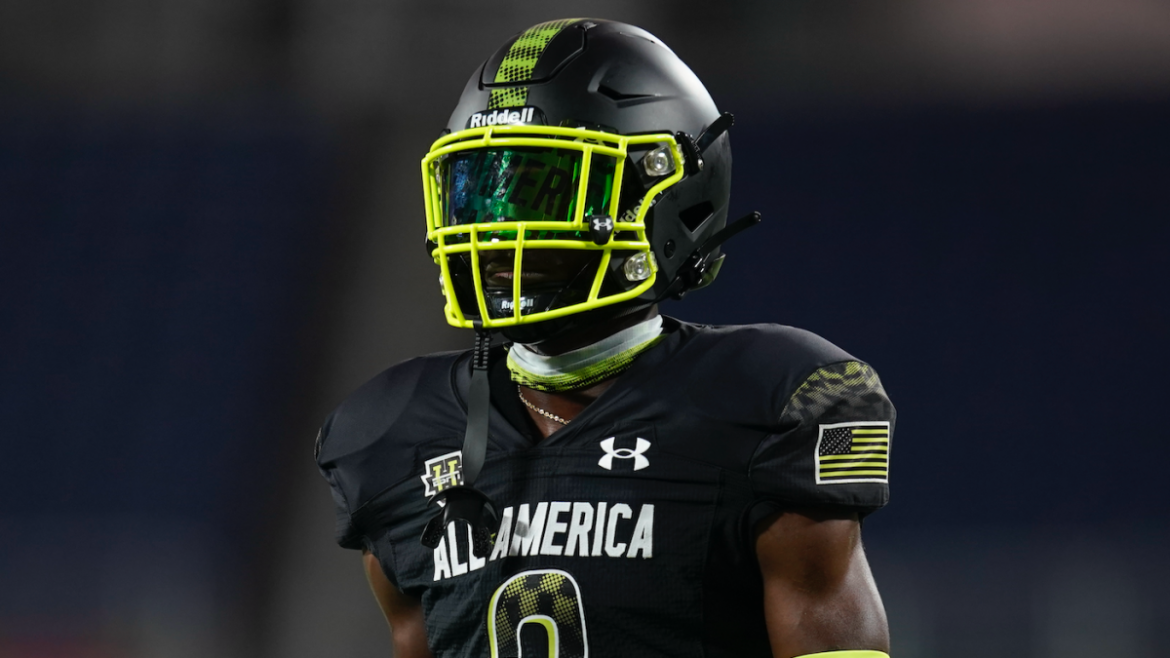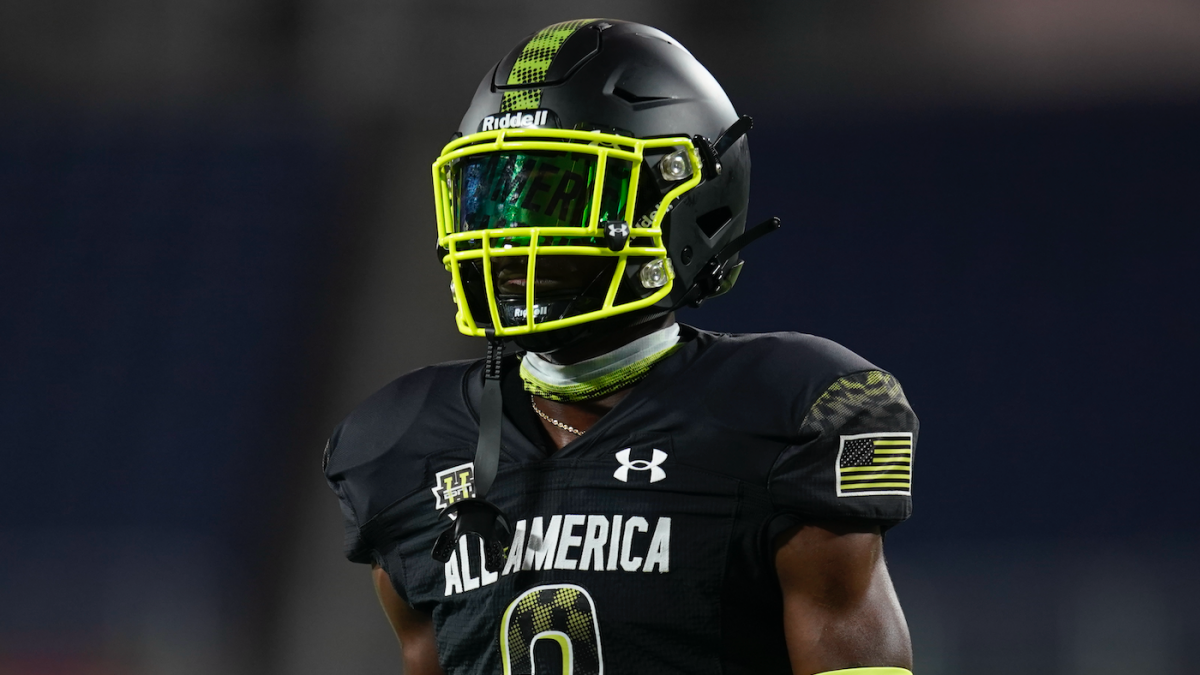The High Stakes Game: NIL and the Evolving Landscape of College Football Recruiting in 2026
The New Gridiron Gold Rush
The landscape of college football recruiting has undergone a dramatic transformation, one that has turned the traditional process into a high-stakes financial arena. The introduction of Name, Image, and Likeness (NIL) deals has redefined the way elite recruits are courted, shifting the focus from athletic and academic promises to lucrative financial opportunities. This shift has created a new dynamic where the most talented high school football players are now being offered deals that rival those of professional athletes, fundamentally altering the recruiting landscape.
The NIL Effect: Money Talks
The impact of NIL on college football recruiting cannot be overstated. The ability for athletes to profit from their name, image, and likeness has created a market where financial incentives play a pivotal role in the decision-making process of top recruits.
The Allure of the Dollar
Top-tier recruits are now acutely aware of their market value, and NIL deals have become a significant factor in their college choices. Surveys of Power Five commits from the 2026 class reveal that NIL packages are a major consideration. Some elite prospects are reportedly being offered NIL deals exceeding $1 million annually, a figure that far surpasses the traditional benefits of a scholarship.
Beyond the Top Tier
While the astronomical sums offered to five-star recruits grab headlines, the influence of NIL extends beyond the top tier. Four-star players are also seeing substantial offers, creating a competitive market where schools must invest heavily to secure their desired talent. This has led to a situation where even mid-tier recruits can command significant NIL deals, further intensifying the recruiting landscape.
The Transfer Portal Amplifies the Impact
The transfer portal, coupled with NIL, has created an environment where players can quickly capitalize on their value. If a player feels undervalued at their current school, the allure of a richer NIL deal elsewhere can trigger an immediate departure. This has led to a more fluid and dynamic transfer market, where players can leverage their market value to secure better opportunities.
The Price of Contendership: Who’s Spending Big?
In the NIL era, recruiting has become a costly endeavor. Programs are allocating substantial resources to attract top talent, creating a new dynamic where financial investment is a key factor in securing elite recruits.
The Big Spenders
Several programs are leading the way in NIL spending. While exact figures remain closely guarded, it’s clear that schools like Texas, Texas A&M, Florida, and USC are making significant investments. These institutions are leveraging their wealthy alumni networks and strategic partnerships to create attractive NIL opportunities for recruits. The ability to offer substantial NIL deals has become a key differentiator in the recruiting process.
The Rise of Collectives
Donor-backed collectives have emerged as key players in the NIL landscape. These independent organizations pool funds from boosters and businesses to create endorsement opportunities for athletes. Some collectives operate with budgets in the millions, allowing them to offer competitive NIL packages. The rise of collectives has added a new layer of complexity to the recruiting process, as schools must now navigate these organizations to secure top talent.
The Spending Arms Race
As more schools embrace NIL, a spending arms race is developing. Programs feel pressured to increase their NIL offerings to remain competitive, potentially leading to unsustainable financial models. This has raised concerns about the long-term viability of NIL in college football, as schools may struggle to keep up with the escalating costs of recruiting.
Challenges and Controversies: Navigating the New Normal
The NIL era is not without its challenges and controversies. The influx of money into college football has raised concerns about fairness, equity, and the potential for exploitation.
The Uneven Playing Field
Schools with deep pockets and strong alumni networks have a distinct advantage in the NIL market. This disparity could exacerbate the gap between the “haves” and “have-nots” in college football, creating a less competitive landscape. Smaller programs may struggle to compete with the financial resources of larger institutions, potentially leading to a more unequal playing field.
The Risk of Exploitation
The pursuit of NIL deals can expose young athletes to exploitation. Some players may sign agreements without fully understanding the terms or receiving adequate legal representation. There have been instances of promised NIL profits failing to materialize, leaving athletes disillusioned and financially vulnerable. This has raised concerns about the need for better protections for college athletes in the NIL era.
Compliance and Regulation
The NCAA is still grappling with how to regulate NIL activities. The lack of clear and consistent rules has created a gray area where violations can occur. Ensuring compliance and preventing abuses will be a significant challenge moving forward. Schools must implement robust monitoring systems to detect and prevent violations, while also educating athletes, coaches, and administrators about NIL rules and regulations.
Erosion of Amateurism
Critics argue that NIL is blurring the lines between amateur and professional sports. The focus on financial gain could detract from the values of teamwork, sportsmanship, and academic achievement. This has raised concerns about the potential impact of NIL on the broader culture of college football, as the emphasis on financial incentives may undermine the traditional values of the sport.
Opportunities and Innovations: The Bright Side of NIL
Despite the challenges, NIL also presents opportunities for athletes and institutions.
Empowering Athletes
NIL allows college athletes to profit from their talents and build their brands. This newfound financial independence can provide them with valuable life skills and opportunities they might not otherwise have. Athletes can now leverage their market value to secure endorsement deals, create their own businesses, and build their personal brands, all while pursuing their athletic careers.
Boosting Local Economies
NIL deals can benefit local businesses and communities. Athletes can partner with local companies to promote their products and services, generating economic activity. This can create a mutually beneficial relationship where athletes can earn income while also supporting local businesses. The economic impact of NIL deals can extend beyond the athletic department, benefiting the broader community.
Innovation in Marketing and Branding
NIL has spurred innovation in marketing and branding within college athletics. Schools and athletes are exploring new ways to engage with fans and create revenue streams. This has led to the development of new marketing strategies, such as social media campaigns, influencer partnerships, and branded merchandise, all aimed at maximizing the value of NIL deals.
Leveling the Playing Field (Potentially)
While currently favoring big programs, a well-regulated NIL system could eventually help smaller schools attract talent by offering unique opportunities tailored to their specific markets and academic strengths. Smaller programs may be able to leverage their unique selling points, such as strong academic programs or vibrant local communities, to attract recruits who value these aspects. This could potentially level the playing field and create a more competitive landscape.
The Future of Recruiting: Adapt or Fall Behind
The future of college football recruiting hinges on how well institutions adapt to the NIL era.
Strategic Investment
Schools must develop strategic NIL plans that align with their athletic goals and financial resources. This includes identifying key areas for investment, building relationships with donors and businesses, and providing athletes with the resources they need to manage their NIL activities. Schools that can effectively navigate the NIL landscape will be best positioned to secure top talent and remain competitive.
Compliance and Education
Compliance is paramount. Schools must educate athletes, coaches, and administrators about NIL rules and regulations. They must also implement robust monitoring systems to detect and prevent violations. Ensuring compliance will be crucial in maintaining the integrity of the recruiting process and preventing abuses.
Focus on Player Development
While NIL is important, it shouldn’t overshadow the core mission of developing athletes on and off the field. Programs that prioritize player development, academic support, and character building will ultimately be more successful in the long run. Schools must strike a balance between leveraging NIL opportunities and maintaining a focus on the holistic development of their athletes.
Embrace Innovation
The NIL landscape is constantly evolving. Schools must be willing to experiment with new approaches to marketing, branding, and athlete compensation. Embracing innovation will be key to staying ahead of the curve and maximizing the benefits of NIL for both athletes and institutions.
Conclusion: A New Era Dawns
The introduction of NIL has ushered in a new era for college football recruiting. It’s a world of unprecedented financial opportunities, complex regulations, and evolving challenges. While the long-term impact of NIL remains to be seen, one thing is clear: the game has changed forever. Schools that embrace innovation, prioritize compliance, and remain focused on player development will be best positioned to thrive in this new landscape. As the 2026 recruiting cycle unfolds, the stakes are higher than ever, and the competition for talent is fiercer than ever before. The question now is not whether NIL will continue to shape college football, but how it will ultimately define it.





